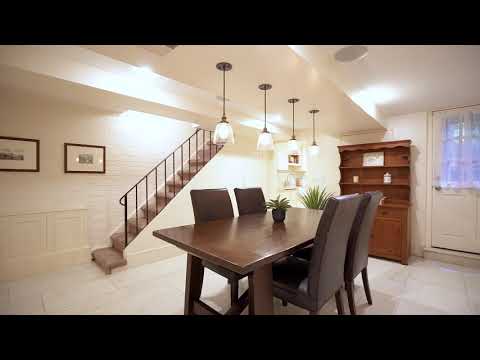By Lisa A. Sturtevant – Assistant Research Professor, George Mason University Center for Regional Analysis
The Northern Virginia housing market has been one of the strongest in the country. Because of its location in the job-rich Washington area, Northern Virginia has attracted thousands of new residents during the last few years. With Northern Virginia’s many amenities, its residents want to stay in the region, moving from renter to owner or moving from a starter house to a larger house. As a result of comparatively resilient demand, inventories of homes for sale in the NVAR region have been drawn down to near historically low levels.
The low level of supply of existing homes, which has not yet being augmented by new construction, has created a sellers’ market and robust price growth in Northern Virginia during the past two years. The road ahead is not so clear.
The steady regional economic growth that drove the housing market recovery has slowed and the federal budget “fiscal cliff” looming at the beginning of 2013 has left the region—along with the rest of the country—uncertain about what’s ahead.
After about 18 months of slow sales activity and price declines during the housing downturn, sales picked up in 2009 in Northern Virginia, beginning a turnaround many months earlier than most of the rest of the country. While the early acceleration in sales was driven in large part by investor purchases of distressed properties in Prince William County, sales rebounded relatively quickly throughout the NVAR region.
The demand in Northern Virginia was due to the strong economy in the Washington D.C. area following the end of the recession. For months after the official end of the recession, the Washington D.C. metropolitan area was the only major metro area in the U.S. that was adding jobs—many in the relatively high wage professional services and government sectors that are fueled by federal spending.
As a result of the region’s favorable economic situation, prices have been up in Northern Virginia. In fact, the NVAR region has seen price growth for 30 out of the past 33 months, and average prices in July 2012 were back to 90 percent of the 2006 peak. Nationally, home prices are still at 2002 levels, according to the Case-Shiller Index.
The inventory of existing homes for sale ballooned in the lead up to the downturn, but they have been drawn down fairly quickly. One reason for the drawdown—at least initially—was the slowdown in the number of homeowners putting their homes on the market. More recently, however, the shrinking inventories are a result of stronger demand for housing by new workers.
In July 2012, there were just over 6,600 homes listed for sale in the NVAR region, down 25 percent compared to July 2011. There was a precipitous drop in inventories between 2006 and 2009, a modest uptick in 2010 (as potential sellers began feeling more confident about finding a buyer), and declines in 2011 and 2012.
Single-family detached homes comprised 68 percent of active listings at the end of July (4,498 total listings), while single-family attached/townhouses accounted for 17 percent and condominiums were 15 percent of the NVAR inventory. Condos remain an outsized share of the inventory, though that share has been dropping as financing has eased.
The overall housing inventory is comprised of these existing homes, as well as new homes. New home construction slowed dramatically during the housing downturn. After a decade of nearly 10,000 new residential building permits each year in the NVAR region, half that number has been typical since 2007.
The homebuilding sector is recovering slowly, and most of the new construction in the region is multi-family rentals. As a result, there is little new construction being added to the for-sale inventory. It likely won’t be until 2013 before the single-family sector will begin adding to inventory in earnest.
What does the low inventory mean for prices? Not surprisingly, low supply in a recovering housing market leads to faster sales and upward pressure on prices. The average days on market in the NVAR region in July 2012 were 46, with 35 percent of homes selling in less than 10 days. Last July, the average days on market was 50, with 21 percent selling in fewer than 10 days.
This demand and the robust performance of the market recently have been predicated on the attractiveness of the Northern Virginia region and strong job growth in the Washington metro area. The region’s future economic picture is more uncertain than it has been in some time.
The proposed $1.2 trillion federal spending cuts, known as sequestration, are currently scheduled for the beginning of the year. A July 2012 report conducted by Dr. Stephen Fuller of George Mason University Center for Regional Analysis concludes that 2.14 million jobs could be lost nationally if the sequestration mandate takes effect. These job losses include direct losses of federal government workers and federal contractors, as well as spin-off jobs that are associated with these sectors.
The “fiscal cliff” looms large for Virginia and the Washington D.C. metro area. Nearly 10 percent of the anticipated job losses nationally will be in Virginia. Only California will experience larger losses.
When D.C. and Maryland are combined with Virginia, the three-state region will account for 21 percent of the national losses, or 450,000 jobs. Some of those D.C. and Maryland jobs that will be lost belong to Northern Virginia residents.
There is already substantial uncertainty in the local economy. Federal agencies have been downsizing through attrition—that is, not replacing retiring workers. Contractors are putting employees on notice and are delaying their hiring. In the first half of 2012, there has been virtually no growth in the federal government and professional and business services sectors in the Washington D.C. metro area. These sectors have traditionally been our region’s high growth, high wage sectors—and an important share of the Northern Virginia potential homebuyer pool.
The impending budget cuts create uncertainty, and when people feel uncertain, they tend to wait on major decisions. This uncertainty will likely lead to a slowdown—though not a decline—in the Northern Virginia housing market this fall. The level of inventories may remain about the same, edged up a bit by new construction that is already in the pipeline, but pulled down a bit as cautious homeowners sit tight in their current homes. At the same time, the size of the potential buyer pool could shrink in the fall as job growth continues to slow.
Increasingly there are signs that agreements will be made to avoid the “fiscal cliff”—at least for now. But it is almost guaranteed that nothing will happen before the November elections, and the uncertainty in and of itself is enough to result in more cautious buyers and sellers in the fall.
The recent strength of the market is a testament to the attractiveness of the Washington D.C. metro area and Northern Virginia to homebuyers. The region will continue to be a place people will want to call home. In the near term, the approaching “fiscal cliff” has many in a wait-and-see mode, which may slow—though not derail—the pace of sales activity and price appreciation in the second half of 2012.
http://nvar.com/2012-september-october-issue/rising-prices-low-inventories-and-the-fiscal-cliff-where-is-the-northern-virginia-housing-market-headed
Jennifer Young Homes’ 10th Annual Coat Drive: Spreading Warmth and Joy This Holiday Season
As the leaves turn golden and the temperatures drop, the spirit of giving is in the air. It's officially fall, and Jennifer Young Homes is excited to announce the launch of our 10th Annual Coat Drive! Every year, we're deeply grateful for your incredible generosity,...

